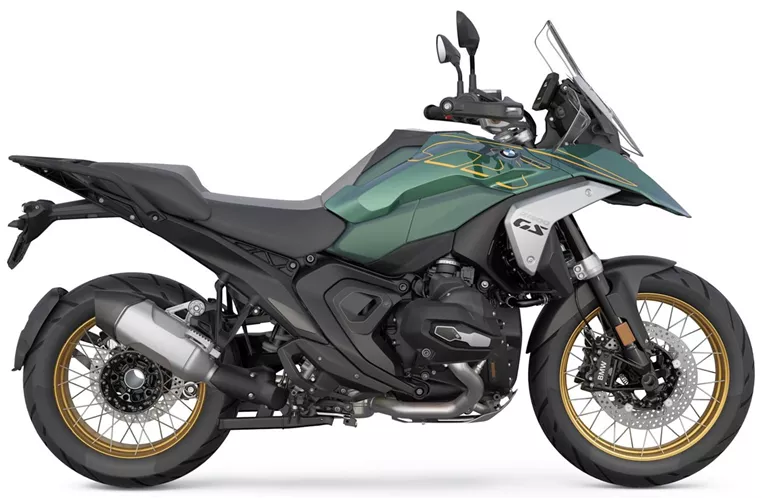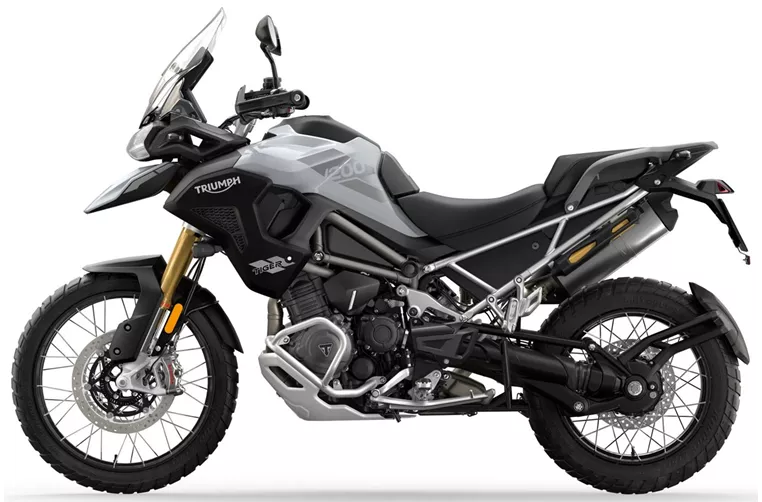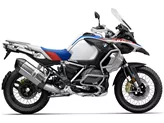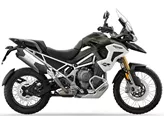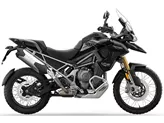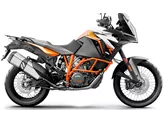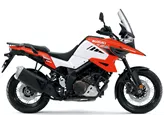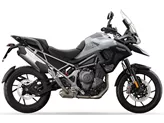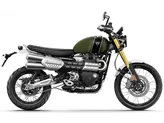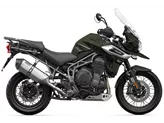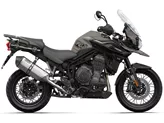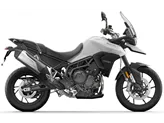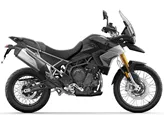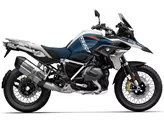BMW R 1300 GS 2024 vs. Triumph Tiger 1200 Rally PRO 2022
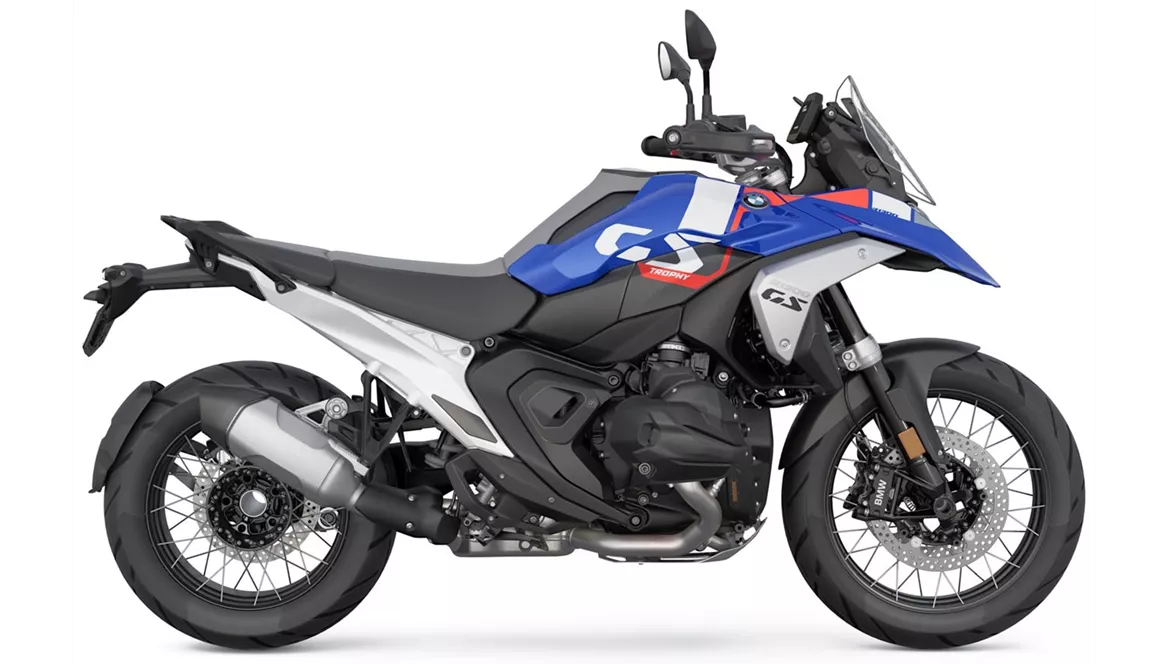
BMW R 1300 GS 2024
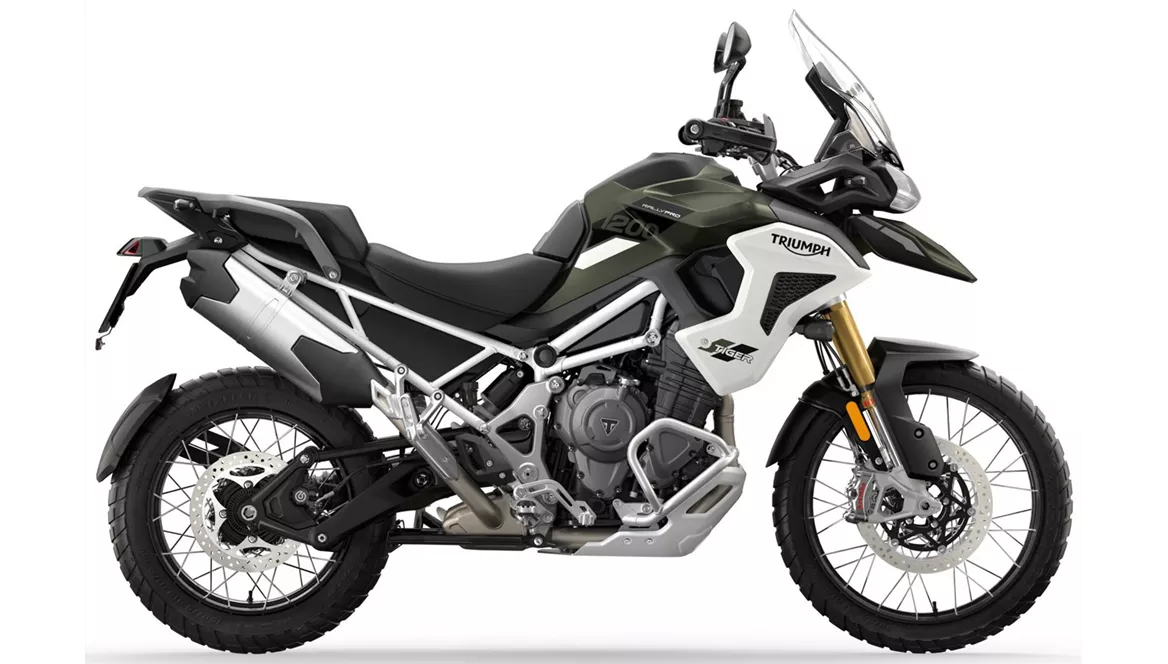
Triumph Tiger 1200 Rally PRO 2022
Overview - BMW R 1300 GS 2024 vs Triumph Tiger 1200 Rally PRO 2022
The BMW R 1300 GS 2024 and the Triumph Tiger 1200 Rally PRO 2022 are both powerful and capable enduro motorcycles. However, they have some distinct differences in terms of specifications and features.
Starting with the engine, the BMW R 1300 GS 2024 is equipped with a Boxer engine, while the Triumph Tiger 1200 Rally PRO 2022 has an inline engine. The BMW has a larger displacement of 1300cc compared to the Triumph's 1160cc. In terms of power, the BMW offers 145 HP, slightly lower than the Triumph's 150 HP. However, the BMW has a higher torque of 149 Nm compared to the Triumph's 130 Nm.
Both motorcycles have electric starters and use a prop shaft for transmission. The BMW has 2 cylinders, while the Triumph has 3 cylinders. The BMW has a bore of 106.5 mm and a stroke of 73 mm, while the Triumph has a bore of 90 mm and a stroke of 60.7 mm.
In terms of suspension, the BMW R 1300 GS 2024 features a Telelever front suspension with 190 mm of travel and a Paralever rear suspension with 200 mm of travel. The Triumph Tiger 1200 Rally PRO 2022 has an Upside-Down telescopic fork front suspension with 220 mm of travel and a swing arm rear suspension with 220 mm of travel. Both motorcycles have preload adjustment for the rear suspension.
The chassis of the BMW R 1300 GS 2024 is made of steel and has a load-bearing engine frame type. It has a rake of 63.8 degrees and a trail of 112 mm. The Triumph Tiger 1200 Rally PRO 2022 also has a steel frame but with a tubular frame type. It has a slightly steeper rake of 66.3 degrees and the same trail of 112 mm.
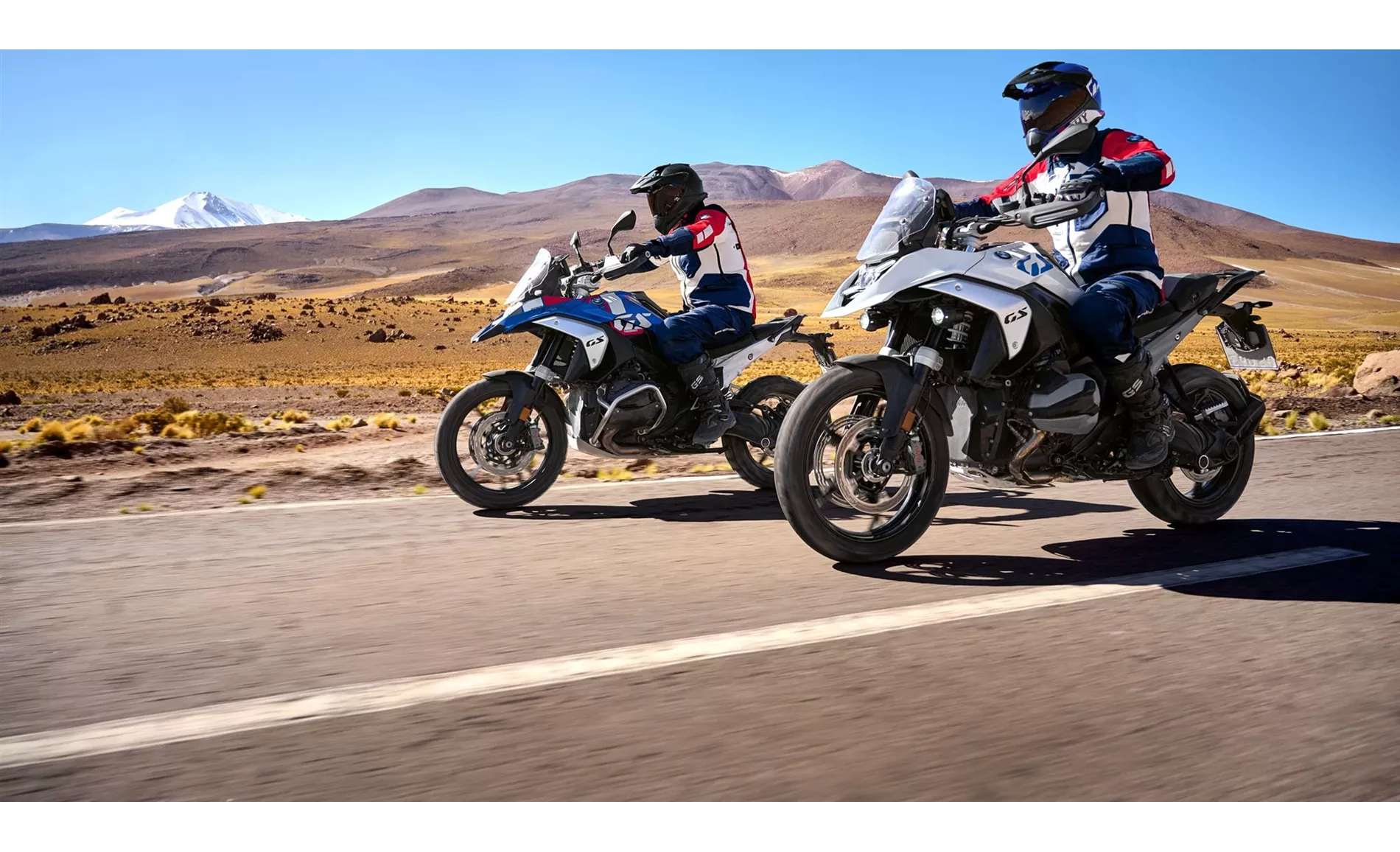
BMW R 1300 GS 2024
Both motorcycles have double disk brakes at the front. The BMW has a front tire diameter of 19 inches and a rear tire diameter of 17 inches, while the Triumph has a front tire diameter of 21 inches and a rear tire diameter of 18 inches. The rear tire width is 170 mm for the BMW and 150 mm for the Triumph.
In terms of rider assistance systems, both motorcycles offer a range of advanced features. The BMW R 1300 GS 2024 includes ABS, anti-slipping control, hill start assist, riding modes, combined brake system, cornering ABS, ride by wire, cruise control, and traction control. The Triumph Tiger 1200 Rally PRO 2022 features hill start assist, electronically adjustable suspension, riding modes, cornering ABS, ride by wire, shift assistant with blipper, cruise control, and traction control.
The dimensions and weights of the two motorcycles are slightly different. The BMW R 1300 GS 2024 has a wheelbase of 1518 mm, a seat height of 850 mm, a kerb weight (with ABS) of 237 kg, and a fuel tank capacity of 19 liters. The Triumph Tiger 1200 Rally PRO 2022 has a slightly longer wheelbase of 1560 mm, a higher seat height of 875 mm, a higher kerb weight (with ABS) of 249 kg, and a slightly larger fuel tank capacity of 20 liters.
In terms of equipment, both motorcycles offer a range of features. The BMW R 1300 GS 2024 includes LED headlights and a TFT display. The Triumph Tiger 1200 Rally PRO 2022 offers additional features such as Bluetooth, connectivity, heated grips, keyless system, cornering lights, LED daytime running lights, and an adjustable windscreen.
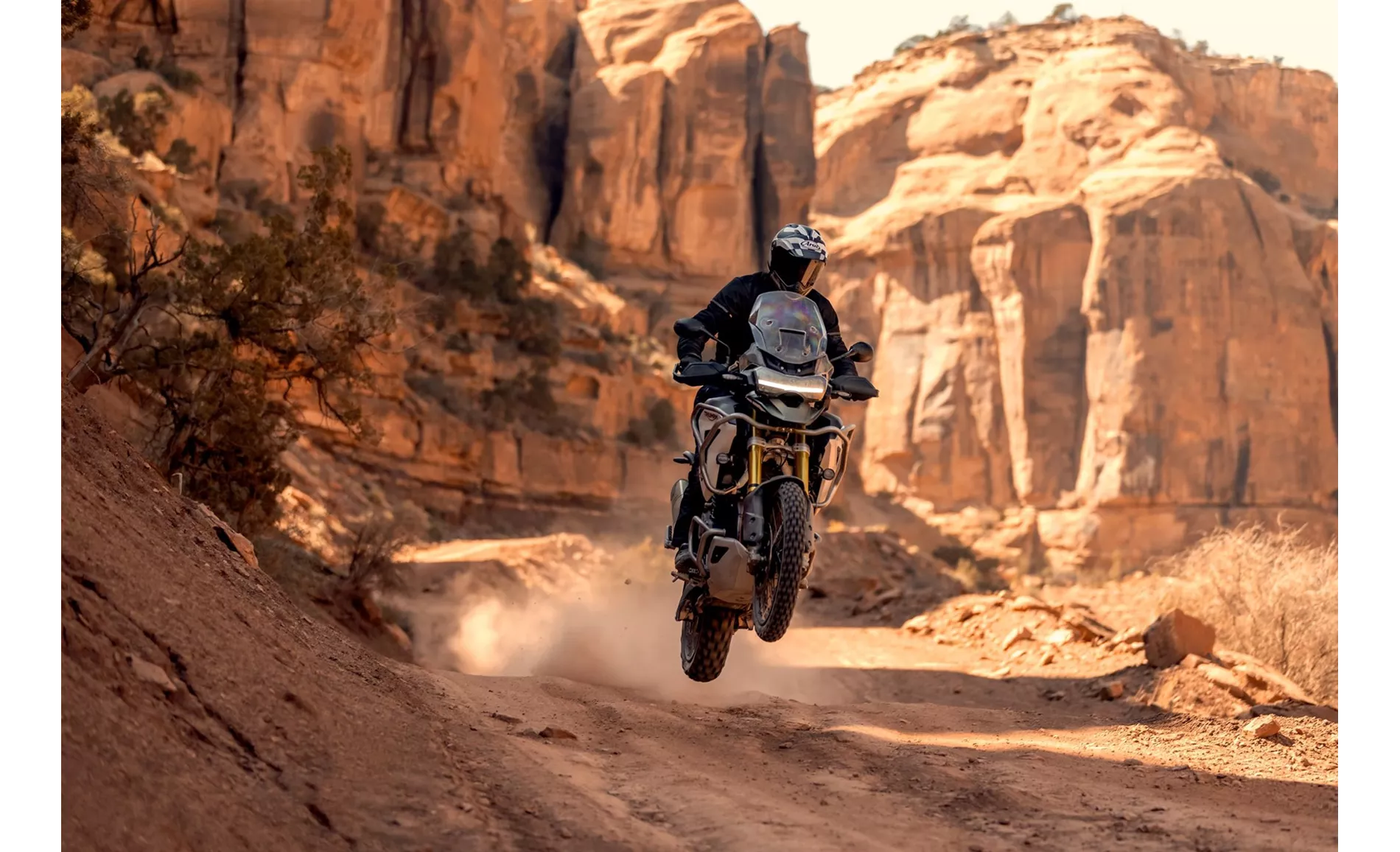
Triumph Tiger 1200 Rally PRO 2022
In terms of strengths, the BMW R 1300 GS 2024 has a powerful engine with excellent response, good traction, stable yet agile handling, practical configuration options, and a well-integrated radar cruise control. It also offers an understandable operating concept, easy-to-read display, a wide range of ergonomic customization options, powerful brakes, and a precise gearbox. Additionally, it has an emergency call system that is well-functioning and unobtrusively integrated.
On the other hand, the Triumph Tiger 1200 Rally PRO 2022 offers pleasant and relaxed ergonomics, good wind protection, state-of-the-art electronics, extensive equipment, powerful brakes, a finely responsive semi-active chassis, a decent range, and a quick-shifting quickshifter.
As for weaknesses, the BMW R 1300 GS 2024 may require selecting unnecessary extras to get the desired configuration, and its suspension may not offer flawless response behavior or a wide adjustment range. It also has some minor issues such as annoying false alarms from the front collision warning system and a slight rolling motion during very sporty riding. Additionally, it may appear too compact for tall riders, especially from the rear, and its ABS system may provide too much feedback into the brake lever during sporty riding.
The Triumph Tiger 1200 Rally PRO 2022 has a few weaknesses as well. Its engine may not run quite cleanly at low revs, the large TFT display could be better utilized, and it may have load change reactions at low revs. Additionally, its seat height is quite high for short-legged riders.
In conclusion, both the BMW R 1300 GS 2024 and the Triumph Tiger 1200 Rally PRO 2022 are impressive enduro motorcycles with their own strengths and weaknesses. The BMW offers a powerful and responsive engine, practical configuration options, and a well-integrated radar cruise control. The Triumph offers comfortable ergonomics, advanced electronics, and extensive equipment. Ultimately, the choice between the two will depend on the rider's preferences and priorities.
Technical Specifications BMW R 1300 GS 2024 compared to Triumph Tiger 1200 Rally PRO 2022
Pros and Cons in comparison
Pros and Cons in comparison
BMW R 1300 GS 2024
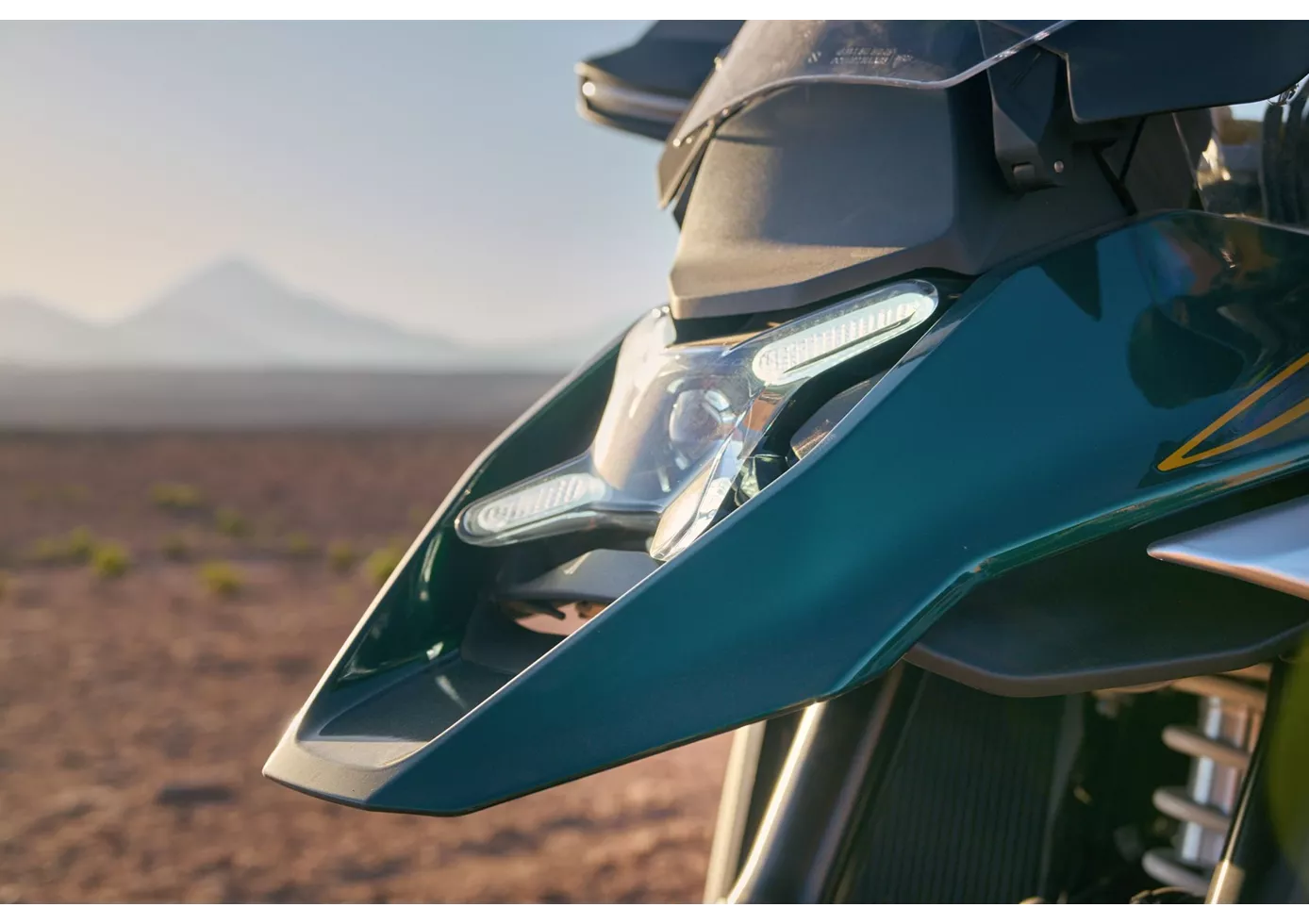
BMW has developed the new R 1300 GS with a wealth of experience and expertise, which is reflected in its advanced technology and versatility. The model appeals to both experienced and new riders and offers an impressive combination of power, comfort and state-of-the-art features. It is a successful blend of compactness, power and luxury that performs both off-road and on the road. Unfortunately, the first series of the new 1300 GS is not yet 100% perfected in some areas, as several recalls as well as vulnerable components show.
Triumph Tiger 1200 Rally PRO 2022
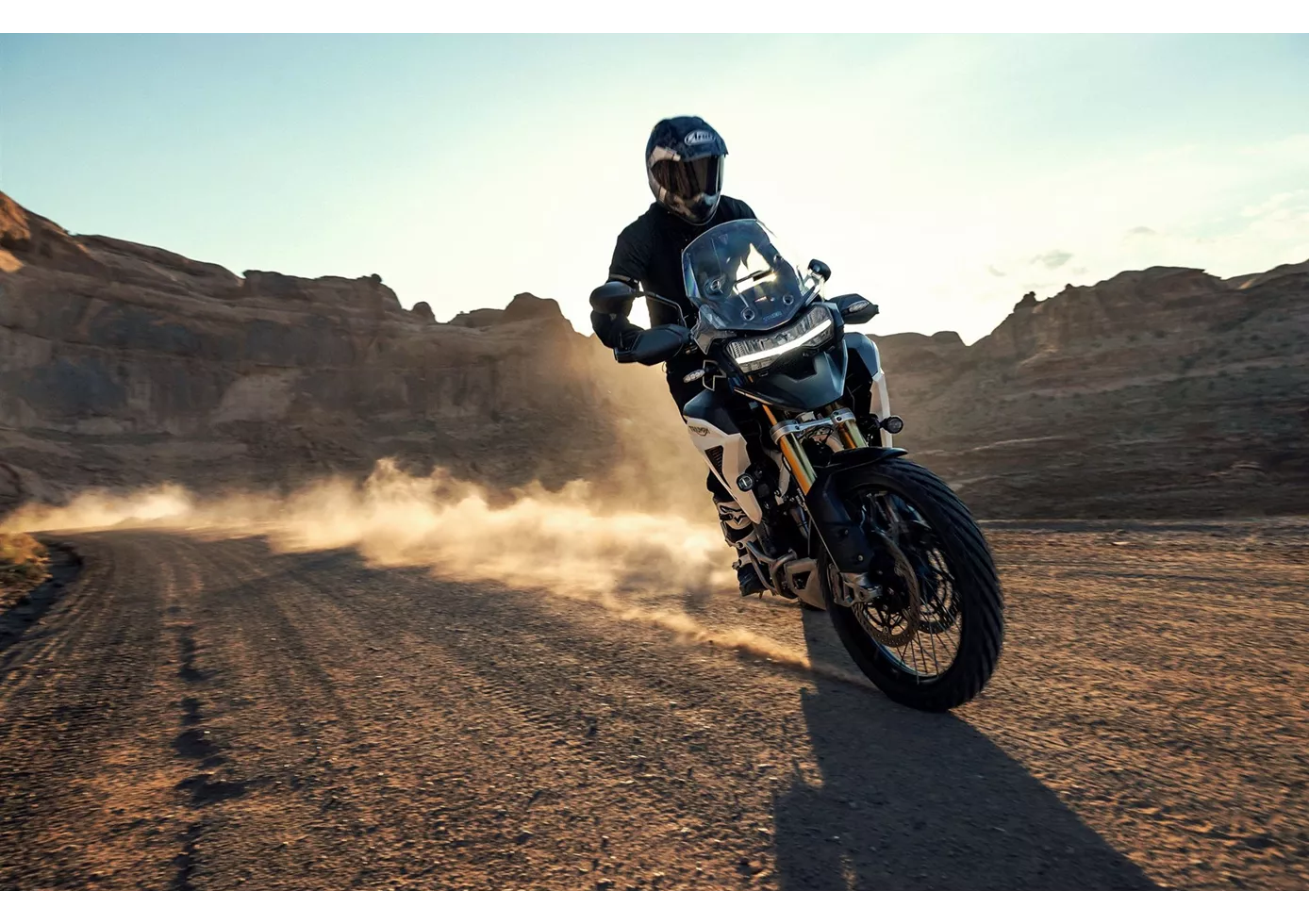
The Triumph Tiger 1200 Rally Pro is a true touring enduro and has a lot to offer. A comfortable, relaxed riding position, good wind protection, ample equipment and real travel suitability. Unlike the competition in the upper class of adventure bikes, however, it unfortunately lacks that certain "wow factor", that unique selling point that BMW GS, Ducati Multistrada V4 or KTM Super Adventure can boast. The Tiger 1200 Rally Pro has no remarkable smoothness, no extremely agile handling or brute engine, but it is well-balanced. However, there is still room for improvement in some areas, especially in the smoothness in the lower rev range. However, the basis is good and well-balanced, and the fine-tuning will hopefully come in the following model years.
Price Comparison Avarage Market Price BMW R 1300 GS vs Triumph Tiger 1200 Rally PRO
There are a few key differences between a BMW R 1300 GS 2024 and a Triumph Tiger 1200 Rally PRO 2022. In terms of price, the actual average price of a BMW R 1300 GS 2024 is about 24% higher. Compared to Triumph Tiger 1200 Rally PRO 2022 there are less BMW R 1300 GS 2024 bikes available on the 1000PS.de Marketplace, specifically 4 compared to 14. It takes less time to sell a BMW R 1300 GS with 15 days compared to 145 days for a Triumph Tiger 1200 Rally PRO. Since model year 2024 1000PS.de editors have written 11 reviews for the BMW R 1300 GS and 9 reviews for the Triumph Tiger 1200 Rally PRO since model year 2022. The first review for the BMW R 1300 GS was published on 9/28/2023 and now has more than 49,900 views. This compares to more than 62,100 views for the first review on Triumph Tiger 1200 Rally PRO published on 12/7/2021.
